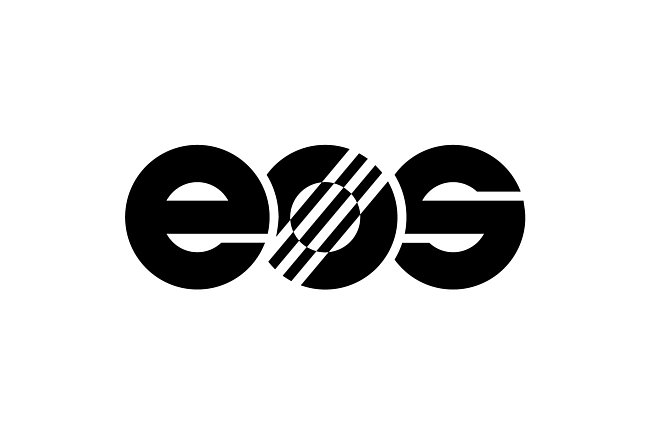Das Bayern Kapital Portfolio im Überblick
-
-
-
-
Blicken statt Klicken für effizientes & ergonomisches Arbeiten
-
-
-
-
-
Die adnymics GmbH wurde 2014 gegründet und bietet intelligente, individualisierte und automatisierte Printwerbung.
-
-
-
-
-
Personalisierte Medikamentenentwicklung für Herz-Kreislauferkrankungen bis zum proof of concept in Patienten
-
-
-
-
-
Revolutioniert das Praxismanagement und Patientenengagement durch zukunftsweisende Cloud-Lösungen.
-
-
-
-
-
Internationaler Marktplatz für die Fertigung von 3D-gedruckten Bauteilen
-
-
-
-
-
AMW ist ein auf bioabbaubare Arzneimittelverabreichungssysteme spezialisiertes pharmazeutisches Unternehmen.
-
-
-
-
-
Die offene Property Management Plattform
-
-
-
-
-
Digital Transformation Success by AppNavi
-
-
-
-
-
Die Bilendo GmbH ist ein SaaS-Anbieter für den Fintech-Bereich mit Sitz in München.
-
-
-
-
-
Blickfeld gestaltet die Zukunft mit innovativer LiDAR-Technologie für die Analyse, Optimierung und Automatisierung der Welt. Die Technologie umfasst 3D-LiDAR-Sensoren und eine benutzerfreundliche Perzeptionssoftware, welche diese Daten in verwertbare Echtzeit-Informationen umwandelt.
-
-
-
-
-
BOX ID ermöglicht es, entlang von Logistikketten alle Orts- und Prozessevents automatisiert zu analysieren und überwachen.
-
-
-
-
-
casavi vernetzt alle Beteiligten rund um die Immobilie & digitalisiert typische Abläufe in der Immobilienverwaltung.
-
-
-
-
-
CatalYm is pioneering a novel therapeutic approach that safely overcomes GDF-15-mediated immunosuppression
-
-
-
-
-
Die Mehrfachsteckdose für E-Autos. Wir bringen die Energiewende auf die Straße.
-
-
-
-
-
Cliniserve ermöglicht durch Kommunikationssoftware neue Pflegearbeitsmodelle gegen den Pflegeengpass
-
-
-
-
-
Wir verbinden Skills, Menschen & Organisationen, um Wachstumschancen freizusetzen Seit der Gründung von Cobrainer als SaaS-Unternehmen im Jahr 2019 sind wir auf einer Mission, die Art und Weise zu revolutionieren, wie Unternehmen die Skills ihrer Mitarbeiter verstehen, nutzen und entwickeln. Mit…
-
-
exit
-
-
-
commercetools gibt global agierenden Unternehmen und Marken die Möglichkeit, innovative, leistungsstarke und hochgradig individuelle, digitale Handelslösungen zu schaffen und damit eine profitable, nachhaltige Marke aufzubauen.
-
-
-
-
-
Das 2017 in Augsburg gegründete Unternehmen entwickelt intuitive Self-Service Lösungen für den technischen Kundensupport.
-
-
-
-
-
Online-Wächterkontrollsystem für den Bereich Sicherheit und Facility Management
-
-
-
-
-
Crealytics supports leading international ecommerce companies to drive retail media and performance in product advertising and paid search.
-
-
-
-
-
DasLab ist eine digitale Laborinfrastruktur- und Interoperabilitätsplattform für medizinische Diagnostik.
-
-
-
-
-
DeepDrive entwickelt hoch-effiziente Elektromotoren für die Automobilindustrie.
-
-
-
-
-
deepeye Medical bekämpft die größten Verursacher von Blindheit mit der weltweit 1. KI–Therapieoptimierung.
-
-
-
-
-
Delicious Data hat eine KI-basierte Software zur Planungsoptimierung für Unternehmen im Lebensmittelsektor entwickelt.
-
-
-
-
-
driveblocks entwickelt Software zum autonomen Fahren ohne hochgenaue Karten für Nutzfahrzeuge.
-
-
-
-
-
Dynamic Biosensors entwickelt und vertreibt Instrumente und Verbrauchsmaterialien für die Analyse biomolekularer Interaktionen auf Biochips und Einzelzellen.
-
-
-
-
-
Individuelle und flexible Online-Nachhilfe mit über 1.000 geprüften Tutor:innen in mehr als 20 Fächern
-
-
-
-
-
Easy2Parts vereinfacht den Einkauf von zeichnungsgebundenen Bauteilen im Maschinenbau und der produzierenden Industrie.
-
-
-
-
-
Ebenbuild formt Stakeholder-Entscheidungen bei Lungenkrankheiten mithilfe seiner hochflexiblen Digital-Twin-Plattform
-
-
-
-
-
Smarte Gymtech, Software & Services: EGYM ist das flexibelste, offene Ökosystem der Fitnessbranche.
-
-
-
-
-
Die neue KI-basierte Superkraft, die Kinder im Lesen- und Sprachenlernen stark macht.
-
-
-
-
-
emax digital ist ein B2B-SaaS-Start-Up aus München mit Fokus E-Commerce Analytics auf allen Amazon Marktplätzen.
-
-
-
-
-
enmacc is a market venue for over-the-counter (OTC) trading of energy and environmental commodities
-
-
Exit
-
-
-
Ganzheitliche Lösungen im Bereich der additiven Fertigung mit 3D-Druck.
-
-
-
-
-
Erium revolutioniert die Nutzung von generativer KI in Unternehmen.
-
-
-
-
-
EVUM Motors ist ein bayerischer Hersteller eines kompakten Elektronutzfahrzeugs mit Allradantrieb.
-
-
-
-
-
ExB beschleunigt die Dokumentenverarbeitung und reduziert Kosten und Zeitaufwand auf ein Minimum.
-
-
-
-
-
Information, Beratung und Vermittlung gemäß DIN SPEC 77003: Elternberatung & Kinderbetreuung, Pflegeberatung und psychosoziale Beratung.
-
-
-
-
-
Kreislaufwirtschaft für Landwirte ermöglichen durch ein regionales Produktionssytem für Insekten
-
-
Exit
-
-
-
Die FAZUA GmbH ist spezialisiert auf innovative, kompakte Antriebssysteme und Konzepte für ästhetische, agile und leichte E-Bikes.
-
-
-
-
-
FERNRIDE bietet skalierbare Lösung für autonomes, elektrisches Trucking.
-
-
-
-
-
Filics entwickelte ein innovatives Konzept für den intralogistischen Transport von Waren.
-
-
-
-
-
Flowsight entwickelt eine KI-gestützte Instandhaltungsmanagement-Software für Industrieanlagen, speziell Brauereien.
-
-
-
-
-
Gastfreund entwickelt digitale Lösungen zur Betreuung, Kommunikation und Organisation für Hotels und Kliniken.
-
-
-
-
-
German Bionic ist ein Robotikunternehmen, das intelligente Wearables entwickelt und fertigt
-
-
-
-
-
Hololight ist spezialisiert auf immersive Software und Technologie für industrielle Anwendungen.
-
-
-
-
-
iATROS hat sich zum Ziel gesetzt die Rate an Schlaganfällen und Herzinfarkten bis 2030 um 30% zu reduzieren.
-
-
-
-
-
Immunic ist ein Biotechnologieunternehmen, das oral verfügbare Therapien zur Behandlung chronischer Entzündungs- und Autoimmunerkrankungen entwickelt.
-
-
-
-
-
Entwicklung einer tragbaren Sensortechnologie zur Messung des Harnblasenfüllstands von Menschen mit einer Blasenfunktionsstörung.
-
-
-
-
-
IQM is the European leader in building quantum computers.
-
-
-
-
-
Isar Aerospace entwickelt und baut Trägerraketen für den kosteneffizienten und flexiblen Transport von Kleinsatelliten und Satellitenkonstellationen in den Orbit.
-
-
-
-
-
iThera Medical develops and markets next-generation diagnostic imaging devices for preclinical and clinical use.
-
-
-
-
-
Wir haben uns als international agierendes Softwarehaus auf die Entwicklung von Enterprise Lösungen spezialisiert.
-
-
-
-
-
Lead-Management 2.0 für den indirekten Vertrieb. Machen Sie Ihre Vertriebspartner zu Kollegen und Leads zu zufriedenen Kunden!
-
-
-
-
-
Laserdirektbelichtungs-Systemlösungen für die globale Leiterplattenindustrie.
-
-
-
-
-
Innovative, interventionelle Bildgebungs- und Navigationsplattform für kardiologische Anwendungen.
-
-
-
-
-
mbiomics ist ein Biotech-Unternehmen, das eine neue Generation wirksamer komplexer mikrobiom-basierter Therapeutika entwickelt
-
-
-
-
-
Eine vollautomatischer Time Tracker, der in jede Projekt- oder ERP-Software integriert werden kann.
-
-
-
-
-
Reducing cancer deaths using revolutionary, broadly applicable and innovative cancer diagnostics and therapeutics ('theranostics').
-
-
-
-
-
Wir glauben daran, dass wir mit munevo Menschen zu Mobilität und Selbstständigkeit verhelfen können. Wir stellen den Menschen ins Zentrum
-
-
-
-
-
Forecast, save and improve lives during the first 1,000 days
-
-
-
-
-
oculai optimiert das Projektmanagement und die Produktivität auf Baustellen durch die automatisierte Überwachung von Fortschritts- und Prozessdaten mittels Kameras und KI.
-
-
-
-
-
ondeso entwickelt Software speziell im Umfeld von Operational Technology (OT) sowie Industrie 4.0 und unterstützt bei der Automatisierung des OT-Client-Managements in der Produktion.
-
-
-
-
-
OroraTech ist das führende Unternehmen für thermal-infrarot basierte Analysen mithilfe von Sensoren im All.
-
-
Exit
-
-
-
parcelLab aus München hat sich auf die Optimierung des Post-Purchase-Erlebnisses im E-Commerce spezialisiert.
-
-
-
-
-
Mozaik ist der einfachste Weg, Firmenvideos zu erstellen.
-
-
Exit
-
-
-
Die kleinsten, leichtesten und widerstandsfähigsten Barcode Scanner der Welt.
-
-
-
-
-
Als erstes Spin-out des Max-Planck-Instituts für Plasmaphysik beschleunigt Proxima Fusion einen Paradigmenwechsel im Energiesektor.
-
-
Exit
-
-
-
IT intelligence made easy.
-
-
-
-
-
Quantum Systems ist spezialisiert auf die Entwicklung, Konstruktion und Produktion von innovativen unbemannten Flugsystemen (Drohnen)
-
-
-
-
-
Reactive Robotics entwickelte mit VEMOTION ein intelligentes robotisches Assistenzsystem zur Frühmobilisierung von Akutpatienten. Die „All-in-One“ Lösung ermöglicht aufrechtes Laufen direkt im Krankenbett.
-
-
-
-
-
Reflex Aerospace entwickelt und baut leistungsfähige Satellitenplattformen in beispielloser Geschwindigkeit.
-
-
Exit
-
-
-
Digitale Lösungen für das Käufer- und Produktmanagement von Bauträgern und Projektentwicklern.
-
-
-
-
-
SaaS Plattform für Website User Experience.
-
-
-
-
-
RYVER.AI bietet eine Software zur Generierung synthetischer radiologischer Bilddaten für die Entwicklung von KI-basierten Medtech Lösungen.
-
-
-
-
-
Samdock ist ein deutsches CRM-System. Die cloudbasierte Software hilft Vertriebsteams, ihre Kunden und Vertriebspipelines strukturiert und effizient zu managen.
-
-
-
-
-
Scomplers Mission ist der strategische Einsatz von Content in Marketing und Kommunikation. Das Ziel: Echte integrierte Kommunikation.
-
-
-
-
-
Scoobe3D entwickelt tragbare, industrielle 3D Scanner mit der intuitiven Bedienbarkeit eines Smartphones.
-
-
-
-
-
sewts erschließt der Robotik eine neue Dimension industrieller Anwendungen.
-
-
-
-
-
SimScale is a cloud-based engineering simulation platform.
-
-
Exit
-
-
-
Für die Entwicklung neuer AAV-basierter Vektoren (Genfähren) im Bereich Gentherapie nutzt SIRION das Prinzip der Evolution.
-
-
-
-
-
Smart Reporting aus München ist Wegbereiter und Marktführer im Bereich der medizinischen Befundung.
-
-
-
-
-
Europäischer Marktführer für intelligentes Raumklima-Management und Anbieter von Energiemanagement-Lösungen.
-
-
-
-
-
Crowdsourced Testing für Websites, Apps, Chatbots, IoT und Business Applications.
-
-
-
-
-
Thermosome ist ein klinischesBiotechnunternehmen das sich auf die Entwicklung von THE001 – einer thermosensitiven liposomalen Formulierung von Doxorubicin – in Weichteilsarkomen fokussiert.
-
-
-
-
-
THEVA ist Hersteller von Hochtemperatur-Supraleitern höchster Qualität für verschiedene Anwendungen.
-
-
-
-
-
Tidely ist ein Liquiditätsmanagement, das Daten in Echtzeit updated und die Finanzplanung dramatisch vereinfacht.
-
-
-
-
-
Fernüberwachte Digitalfallen und Dokusoftware für eine Schädlingsbekämpfungs-Branche des 21. Jahrhunderts
-
-
-
-
-
TRiCares, ein innovatives Medizintechnik-Unternehmen mit Sitz in Paris und München, entwickelt ein katheter-basiertes Herzklappen-Ersatzsystem.
-
-
-
-
-
Neue Wege zur Behandlung von Krebs mithilfe von Antikörper-Wirkstoff-Konjugaten.
-
-
-
-
-
VEACT ist der führende Datenspezialist in der Automobilindustrie, der digitale Lösungen für Vertrieb, Aftersales, Analyse und Marketing bietet.
-
-
-
-
-
Strömungsmesstechnik von Vectoflow
-
-
-
-
-
Medizinprodukteentwicklung beschleunigen und sicherer gestalten mit digitalen Patientenzwillingen
-
-
-
-
-
Einfach zu bedienende No-Code-Plattform, mit der sich Unternehmen und Einrichtungen jeder Branche und Größe ihren eigenen, auf künstlicher Intelligenz basierenden Telefonassistenten selbst konfigurieren können.
-
-
-
-
-
VoltStorage entwickelt und produziert Speicherlösungen für erneuerbare Energien auf Basis der Redox-Flow-Technologie.
-
-
-
-
-
wealthpilot ermöglicht Banken, Vermögensverwaltern und -beratern eine Symbiose aus digitaler und persönlicher Vermögensberatung.
-
-
-
-
-
Workerbase hat es sich zur Aufgabe gemacht, die Produktionsabläufe der größten Hersteller der Welt zukunftssicher zu machen. Workerbase verbindet Arbeiter, Maschinen und bestehende Systeme zu einer leistungsstarken Plattform, die jeden Produktionsworkflow flexibel ausführen kann.
-

